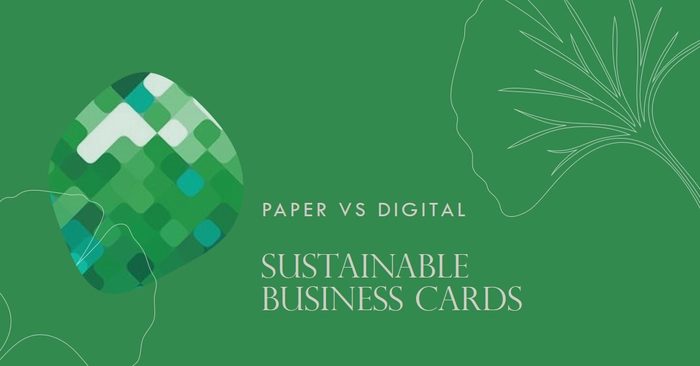Environmental Impact: Paper vs. Digital Business Cards
In today's digital age, the debate surrounding the environmental impact of traditional paper-based business cards versus their digital counterparts has gained substantial momentum. This discourse transcends the realm of mere convenience and extends into the larger sphere of ecological responsibility. As we delve into this discussion, we aim to dissect and comprehend the intricate nuances that delineate the ecological footprints of both paper and digital business cards.
Paper Business Cards: A Legacy in Question
The enduring tradition of exchanging paper business cards has been an integral part of professional networking for decades. However, its environmental repercussions cannot be overlooked. The process of manufacturing paper cards involves a sequence of resource-intensive procedures, from harvesting trees for paper pulp to chemical treatments and printing processes.
Environmental Toll of Paper Manufacturing
The production of paper cards necessitates the consumption of natural resources, primarily trees, contributing to deforestation. Furthermore, the chemical treatments involved in paper production release harmful pollutants into the environment, exacerbating air and water pollution.
Deforestation: A Looming Concern
The extraction of trees for paper manufacturing disrupts ecosystems, impacting biodiversity and reducing carbon sequestration. The loss of forests intensifies climate change, a critical global concern.
Digital Business Cards: A Greener Alternative?
In contrast, the emergence of digital business cards presents an eco-friendly alternative, seemingly mitigating the adverse impacts associated with their paper counterparts.
Reduced Resource Consumption
Digital business cards eliminate the need for paper, significantly reducing resource consumption and minimizing the carbon footprint associated with traditional printing methods.
Energy Efficiency in Distribution
The digital dissemination of business cards reduces reliance on physical transportation, diminishing the associated carbon emissions, making it a more sustainable option.
Striking a Balance: The Quest for Sustainability
While digital business cards offer promising ecological benefits, they are not without their environmental costs. The manufacturing, usage, and disposal of electronic devices used to create and store digital cards contribute to electronic waste, posing a different set of environmental challenges.
The E-Waste Predicament
The rapid turnover of electronic devices results in a burgeoning e-waste crisis, necessitating proper recycling and disposal methods to mitigate its impact on the environment.
Conclusion
The comparison between paper and digital business cards in terms of their environmental impact underscores the imperative for conscious decision-making. Each mode has its ecological footprint, necessitating a balance between the two for sustainable business practices.
Frequently Asked Questions
1. Are paper business cards entirely unsustainable?
Paper business cards pose environmental challenges due to their resource-intensive manufacturing process. However, employing recycled paper and sustainable printing methods can mitigate their ecological impact.
2. Are digital business cards entirely eco-friendly?
While digital business cards reduce paper usage and transportation-related emissions, the disposal of electronic devices contributes to e-waste. Proper recycling measures are crucial to minimize their environmental footprint.
3. Which option is more environmentally friendly: paper or digital business cards?
Both options have their environmental pros and cons. The choice should involve considerations of resource consumption, recycling practices, and overall ecological impact.
4. How can businesses make their business card practices more sustainable?
Implementing environmentally friendly materials, such as recycled paper, and embracing digital cards while ensuring proper e-waste management are steps toward sustainable practices.
5. What role do consumers play in reducing the environmental impact of business cards?
Consumers can opt for eco-friendly materials when designing paper cards and practice responsible e-waste disposal when using electronic devices for digital cards.


